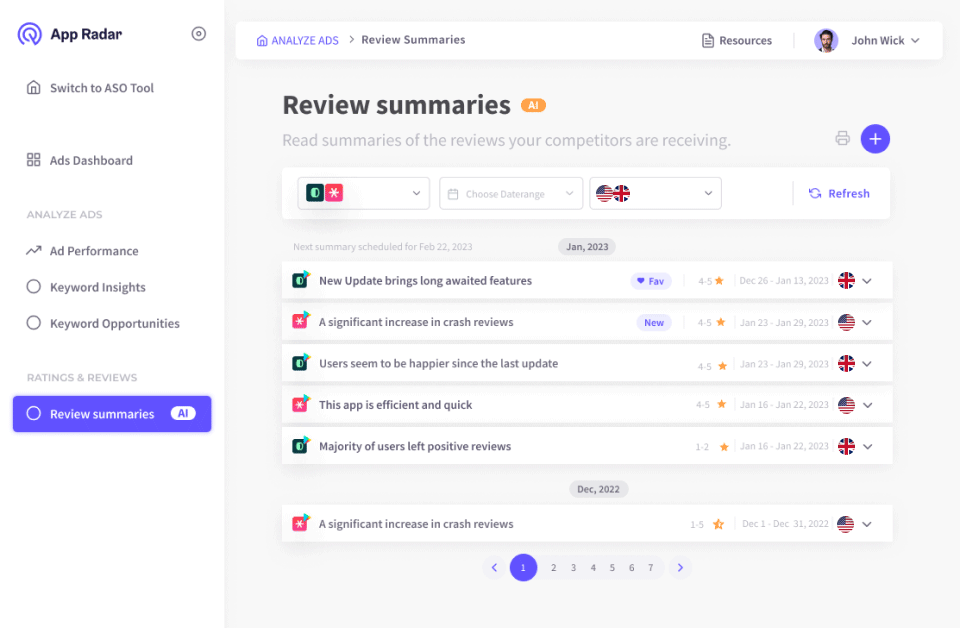The ultimate guide to Google Play and App Store ratings and reviews in 2023
App ratings and reviews are vital to your app’s success in Google Play and App Store. People use ratings and reviews to decide whether they should or should not download an app.

Having a lot of high average ratings and positive reviews means that your app will get better keyword rankings and higher conversion rates and has a much higher chance of being featured in app stores. Or in short, app ratings and reviews significantly impact app store optimization (ASO).
Serving as public feedback that an app gets, managing app reviews and ratings is one of the most important tasks of any app marketer. It doesn’t matter if you have a new and small app or manage a well-established app with thousands of ratings – app review management should always be at the top of your work list.
So in this complete guide, we will introduce you to the topic of ratings and reviews and share the best tips you need to get positive feedback from your users. And to achieve long-term success in app stores.
What are app ratings and reviews in app stores?
App ratings and reviews in app stores show how popular your app is and what users think about the app. Ratings and reviews are public feedback from previous or existing app users where they share their experiences.
App ratings can range from 1 to 5 stars, with 5 being the highest rating and 1 being the lowest grade your app can get.
App reviews are quality feedback that users write together with ratings. App users write reviews describing what they liked or disliked about the app.

Both ratings and reviews are publicly visible in Google Play and Apple App Store. While app reviews are visible only on the app product page or store listing, app ratings are additionally visible throughout the app stores in search results and recommended categories. This makes the ratings a high-importance factor influencing conversion rates at all levels.

Start with a rating and review strategy
Every app should have an app rating and review strategy. Whether you manage a young and less familiar app or an established and well-known one, you must define how and when you will gather user feedback.
Any app will receive negative reviews since unhappy users are likely to share their frustrations with the general public. So it would be best to consider how you will deal with unhappy users first. Both Google Play and Apple App Store can feature negative reviews on your store listing pages, so if new users see bad reviews that you don’t address, your app installs conversion rate will suffer.
The other big goal you need to address through your app rating and review strategy is how to encourage happy users to rate and review your app. This part of the strategy includes defining data sources, tools you need, design and types of app prompts you will use and monitoring progress. You must often work closely with your in-house developers to analyze user behavior and define app screens that trigger different prompts.
Remember, app ratings are tremendously important for all apps. To get new ratings and reviews or maintain the current rating averages, you need a strategy covering how you will address negative reviews. And at the same time, your strategy needs to define how you will ask for feedback concerning user behavior, app prompt timing and types of prompts.
Why are app ratings and reviews important to ASO?
There are many reasons why app ratings and reviews impact ASO. Reaching high keyword rankings and attracting users from different traffic sources is almost impossible without optimized user feedback.
Here are the most important benefits that ratings and reviews have for ASO:
- The installs your app gets from search traffic are higher if the app has many positive ratings that communicate trust and a strong user base. Also, highly rated apps usually get high keyword rankings.
- Apps with many positive ratings and reviews get more browse or explore traffic – they are more likely to be featured in app stores and recommended to app users. And being featured means that your app installs can literally spike.
- High conversion rates directly result from ratings and reviews – app store users can compare different apps based on the number of ratings and positive reviews and quickly locate the apps with the most user trust.
- A positive and high brand image is something that ratings and reviews influence. High-rated apps show social proof and high quality and reinforce the brand value.
- Positive reviews earn more trust – before installing an app, the potential users read reviews and especially pay attention to what negative reviews previous users write and how the app developers respond to complaints.
- Getting a lot of app reviews is another big importance for the Play Store – the keywords from reviews can get indexed, which boosts keyword rankings.
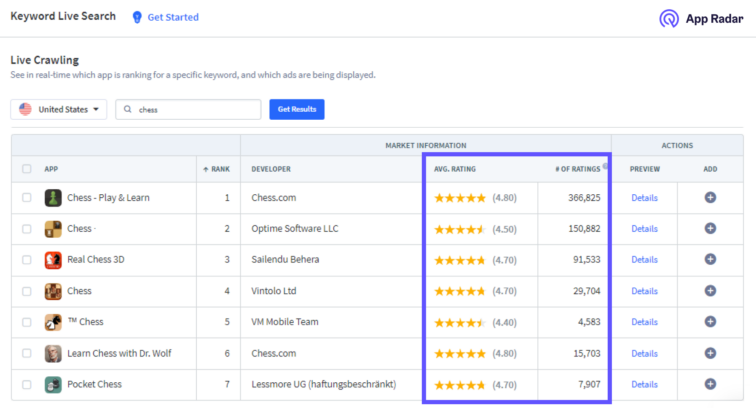
App ratings and review are incredibly powerful app marketing tool. If you want to check what else can push your app in app stores, make sure to read check out best practices for app store optimization.
Differences between Google Play and Apple App Store
Ratings and reviews have the same goal in Google Play and Apple App Store. They are unified metrics that show how certain apps are popular and trustworthy and what the users think about them.
The biggest differences between the two app stores are how they are calculated, managed, and presented and how much reporting data is available.
Keywords in Google Play Reviews count for App Store Rank
In Google Play, your app can be ranked for keywords not found in your metadata – the app name, short description, or long description.
Like a web search engine, Google indexes all descriptive words on your app store listing, including the ones found in the user reviews. You can use this when replying to Google Play reviews by inserting your priority keywords in your responses. Just make sure that you sound natural, and don’t overdo it.
Unlike Google, Apple does not index any keywords found in the App Store reviews. Nevertheless, you can use the iOS keyword field to input keywords not already in your metadata.
Billing and downloading issues go to Apple for iOS apps
Apple enjoys centralizing its products. Every subscription and published app first goes through the App Store team. That also means that Apple will handle any billing or downloading issues that users are experiencing.

Ensure you give the user clear instructions on contacting Apple concerning subscription refunds and related issues. You can create a reply template in App Radar to address common billing problems.
Helping users with things like this means you have much more chances of improving their initial negative app rating.
Highlighted reviews
Apple tends to highlight about six reviews on the app listing page. These reviews could be from yesterday or even a year ago. As an app developer or publisher, you can’t prevent bad reviews from being featured on the app product page. However, you can show all visitors you take care of the users’ feedback.
For example, let’s have a look at two positive app listings.

They both show positive reviews, but one has a developer response, and the other does not. Immediately people are drawn to the app with a developer response. A reply shows that updates are continually being made and an attentive team is behind the app, making it a much more appealing choice.
Another example that we can look at is when there are negative reviews.
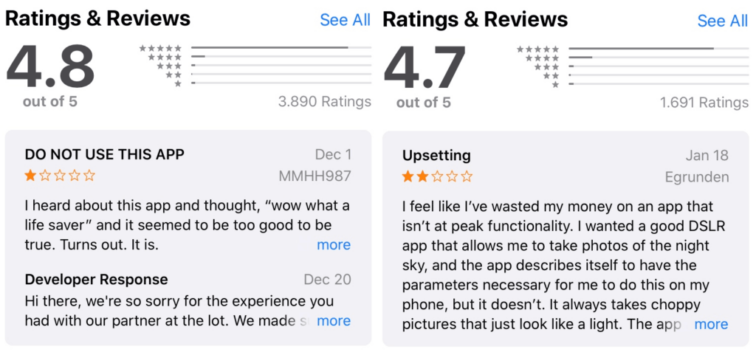
The negative review is less drastic when there is a developer response. Curious App Store visitors will be interested in what the app developers have to say in response to a user’s complaint. A good reply explains why the problem occurred or ensures that the team works to fix it, which reduces the impact of the complaint.
Most positive and most critical reviews in Google Play
Google also highlights apps but in a different way. They show the most positive and the most critical review. There’s no way to get out of a negative user review on your Google Play page. People can also filter for critical reviews. So it’s even more important that you’re replying to every Google Play review. People want to see that you care not only about favorable and cynical opinions.

Rating calculation
Google Play gives more weight to the ratings from the latest app versions. That way, it wants to reward app developers and marketers for their improvement. So the average app rating for Android apps is more influenced by recent ratings than those given a few years ago.
On the other hand, Apple calculates average app ratings by dividing all star ratings by the number of ratings an app received during the entire lifetime.
Resetting the ratings
The ratings in Play Store can’t be reset. Google doesn’t provide this option to app owners and rather encourages app marketers to work on improving the ratings. Users can change their rating if they are satisfied with your response and reward you with updated and higher ratings.
App owners of iOS apps can reset their app ratings. When submitting a new app version in App Store Connect, you can choose to reset the ratings, and after your app passes the review, there won’t be any ratings standing next to it.
While getting rid of bad ratings is helpful, your future conversion rates and user trust will suffer – with zero ratings standing next to your app, many App Store users won’t consider the app.
Reporting
Both Google Play and App Store offer reporting on app ratings and reviews.
However, Google Play goes much further and allows multiple data breakdowns and filters in Google Play Console to analyze how well you are doing in detail.
Apple also provides reporting in App Store Connect. Still, the depth and range of reports are limited, so app marketers often use third-party tools to have more reporting possibilities.
Google Play ratings and reviews
Google Play ratings and reviews play a big role in Google Play ASO.
App ratings are visible everywhere in Google Play. When users perform a Play Store search, every result will contain the app title, icon, category, approximate number of downloads, developer name, and average rating number.
So when people look at the search results, they can easily compare apps by ratings and select the highest ratings. And because search traffic makes the most of almost any app’s traffic, having many positive ratings plays a huge role in the conversion rate.
The ratings appear everywhere – in the recommended section, in the Top charts, among the ads, and wherever there is an app icon and title. And to get into those sections and be recommended by Play Store, your app needs to have at least a 4.0 average rating and, ideally, receive many ratings.
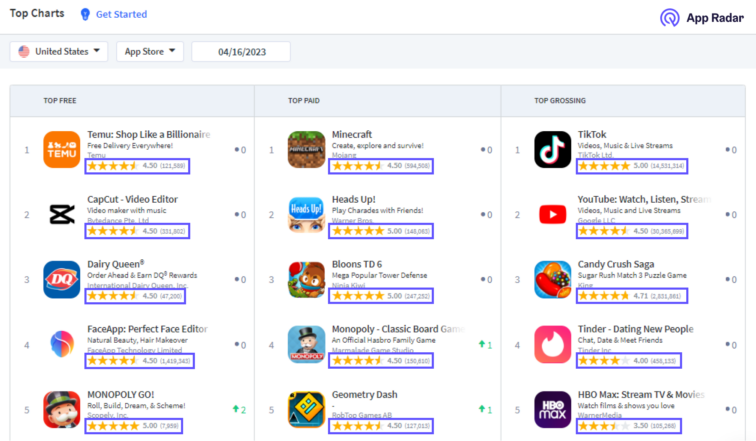
App reviews, on the other hand, appear only on the store listing of an app. So while ratings help you get to the store listing page, app reviews are the crucial ingredient that encourages users to install the app. Play Store users regularly check positive and negative reviews. While every app gets bad reviews, how you deal with them is what has an impact on the installs.
Any app user can leave a rating and review in Play Store. Since some people leave inadequate and inappropriate reviews, Google Play suggests that app developers report those, and they will be removed.
As an app owner, you can’t delete reviews that you don’t like. The best way to change negative reviews is to reply to user reviews and address the issues directly. There is a big chance that a happy user will be ready to improve their review, which is something other store listing visitors might also see.
The best way to improve app feedback in Google Play is to have a structured approach. Analyze your and competitor reviews to see what users like and dislike about your app category, develop a plan to address negative and ask users for new reviews, measure your progress, and be systematic about it.
With App Radar’s AI-powered App Review Summaries, you can analyze any review quickly and effectively. Choose the app you want to review, app store, time frame, country, and average rating, and you will receive a text summary showing what people like and dislike and things that you should improve if you own the app.
Discover What App Users Want 10x Faster with AI Review Summaries
Save time reading tons of app reviews word by word. Get weekly or monthly reports per any app on a global scale.
Apple app store ratings and reviews
Apple App Store ratings and reviews work similarly to those in Google Play. While they differentiate in some things, they also have a big impact on app downloads and the app visibility in App Store.
The app search is also a big potential traffic generator in App Store. However, unlike the Play Store, the rating part of the app’s presence is not that visible. Or differently said, the App Store search puts more focus on app screenshots and shows fewer app results, which also makes the appearance of app rating stars less present.
However, in the search results, Apple shows the average app rating and the ratings an app has received. This is another differentiating point or element that influences the app conversion rates for the users.
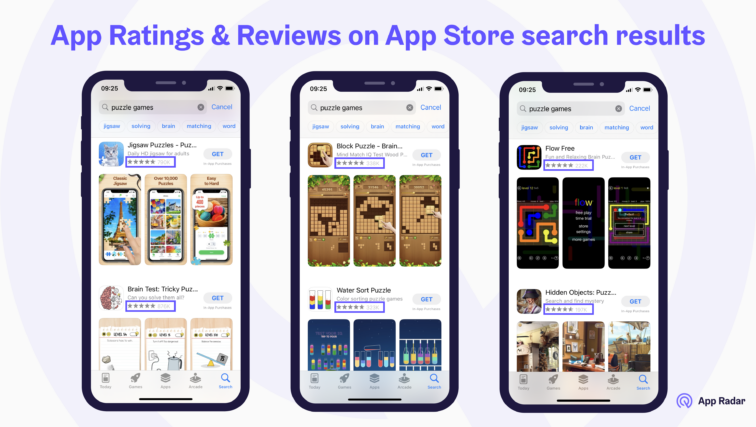
Nevertheless, when showing apps in the recommended sections, App Store doesn’t accompany those recommendations with app rating statistics. That doesn’t mean that app ratings are any less important – they influence search results, keyword rankings, and conversion rates, and you still need to receive a lot of rankings if you want to get featured in the recommended categories such as “Today,” “Apps” or “Games.”
The reviews in App Store can be found only on the app product pages, and they are also very emphasized, thus encouraging or discouraging users from app installation. Similar to Google Play, you should follow the best practices when it comes to app review management. That includes analyzing the reviews, replying to reviews, following the guidelines, and actively asking users to rate and review your app.
Improving app ratings and reviews
We have already mentioned that app ratings and reviews play a huge role in ASO.
High-rated apps get more clicks from search traffic inside app stores, more browse traffic from being featured and recommended, higher keyword rankings and conversion rates, plus higher brand image.
If your app already gets a nice amount of user ratings and reviews, but the average rating is low, you should absolutely work on improving them.
Low-rated apps will receive fewer downloads and be less visible in app stores, followed by low conversion rates. So without improving your app ratings, improving your app’s organic keyword rankings will be almost impossible, even if you optimize your metadata, app icon, and screenshots.
There is no shortage of tactics that you can use to improve app ratings and reviews, such as:
- Actively asking users to rate your app
- Testing and mixing different app prompts and triggers
- Replying to users’ reviews
- Incentivizing users to share their feedback
- Using other channels
- Trying out gamification tactics
These are only some of the tactics you can use to improve your app feedback, so check out our dedicated articles about improving app ratings and reviews.
Replying to user reviews in app stores
When you start analyzing your app’s reviews, you will notice a mixture of good and bad reviews. The good reviews don’t require much work, and simply thanking the user for being supportive is already enough. However, bad reviews require your special attention.
If you are still not sure why you should reply to user reviews, here are some good reasons:
- Replying to reviews is directly connected to receiving higher ratings, especially when replying to negative reviews
- App ratings heavily influence acquisition of new users
- Apps with more ratings have higher keyword ratings
So when you see that a certain user writes a bad review and gives you a low rating, by replying to that review and addressing the concern, there is a high chance that the user will update his/her ratings. And with that, the updated review will also look nicer.

When deciding which type of feedback to tackle first, the priority should have:
- Reviews with 1 or 2-star ratings
- Reviews that mention app crashing or a big technical issue
- Any negative review, regardless of the number of star ratings it got
There are many best practices for replying to user reviews. Some of them are replying promptly to them, addressing users personally, using a corresponding tone of voice, being honest and concise, and sharing updates with your users.
Finally, make sure to be as efficient as possible – use templates, translate reviews automatically to English, and create customized tags for different feedback types.
Keep analyzing the reviews to understand your market
One of the most underrated methods of app competitive analysis is the app review analysis.
Positive reviews can quickly show you what users like and which features they, especially, value. Negative reviews, however, can show you if you have current technical issues, if some features don’t work, why the user experience is not good, etc.
Say you have identified 10 apps in your category and would like to understand why users like them and which elements they especially like. Analyzing app reviews can show you all that – many app users will honestly write about their experience.
One option is to read the reviews manually. While this is not effective, and you might miss many important elements if you are not focused, you should be able to learn more about your and other apps.
But a better option is to use App Radar’s AI-powered App Review Summaries to get valuable suggestions in minutes. Instead of wasting much of your time on manual work, this feature can scan and analyze Android and iOS app reviews in any country. After performing the analysis, you will receive a text summary, a list of appreciated features, and the requested improvements that app users want to see.
Review analysis regularly allows you to monitor if your competitors improve their apps and what users think about them. And you can do the same for your app whenever you like.
Closing thoughts
App reviews and ratings are a big part of app marketing. To make your app successful, you must constantly manage and improve your app feedback.
First, familiarize yourself with Play Store and App Store ratings and reviews. After that, analyze your current situation and work on your app strategy.
Make replying to user reviews and improving your app ratings a high priority. Once you come to that phase, keep analyzing your competitors to find those precious insights that will allow you to serve potential users better than competitors.
And to be successful at all that, make sure to sign up for App Radar’s app marketing platform. It will allow you to work on traditional ASO elements, paid user acquisition, and managing ratings and reviews.
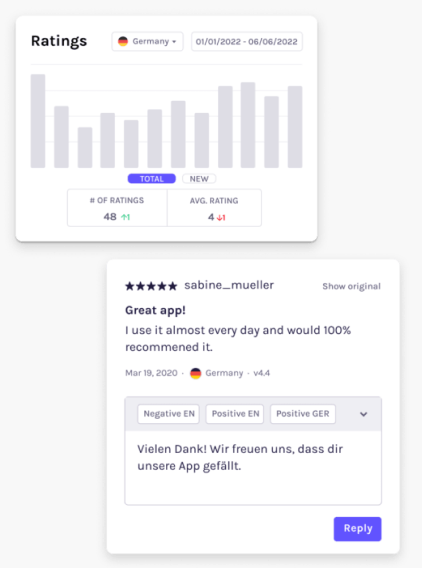
Latest Posts
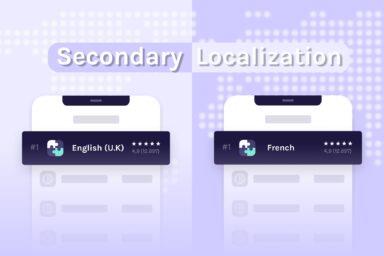
iOS App Product Page Localization: How to Use it the Right Way to Improve ASO
Top 10 Most Downloaded Games in Google Play Store (July 2025 Update)
Google Play Store Listing Experiments: How to Run Native A/B testing for Android Apps for Free!
12 Best Mobile Measurement Partners (MMPs) to Consider for Your Mobile App Attribution in 2025
Academy Lessons
Continue lessons

